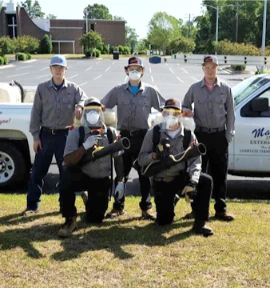Household pests are a recurring challenge for many homeowners. From ants and cockroaches to mice and spiders, these unwanted guests can contaminate food, damage property, and pose health risks. While it may seem like pests appear out of nowhere, the truth is that small habits and conditions inside and outside your home often create the perfect environment for infestations.
Preventing household pests doesn’t require a complete lifestyle overhaul, often, it’s about being consistent with a few simple, effective steps. This guide offers expert-backed tips to reduce pest activity and subtly highlights the role professional help plays in long-term prevention.

Keep a Clean and Crumb-Free Kitchen
Kitchens are one of the most common areas where pests thrive, largely because they offer easy access to food and moisture. Ants, roaches, and rodents are all highly attracted to crumbs, spills, and improperly stored food.
Simple ways to pest-proof your kitchen include:
- Wipe down countertops and floors regularly
- Store food in airtight containers
- Clean dishes promptly after meals
- Avoid leaving pet food out overnight
- Take out the trash frequently and use bins with tight-fitting lids
Even small bits of food left behind can become a feast for pests. A consistently clean kitchen reduces this attraction and makes your home far less welcoming to foraging intruders.
Eliminate Moisture Sources Around the House
Many household pests, especially cockroaches, mosquitoes, and termites, are drawn to moisture. Leaky pipes, clogged drains, and poorly ventilated areas provide the damp environments pests need to survive and reproduce.
To reduce moisture issues:
- Fix leaky faucets, pipes, or appliances immediately
- Use a dehumidifier in damp areas like basements or laundry rooms
- Ensure bathroom fans are functioning properly
- Clear gutters to prevent water from pooling around the foundation
- Inspect crawl spaces for condensation or leaks
Controlling excess moisture not only helps prevent pest infestations but also contributes to healthier indoor air quality and a stronger home structure. For even more year-round protection, especially in moisture-prone areas, consider how pest control insulation can support both comfort and pest defense.
Seal Entry Points in Walls, Windows, and Doors
Pests don’t need a wide-open door to get inside. Tiny cracks, gaps, and holes in your home’s exterior are more than enough. Mice can squeeze through holes the size of a dime, and insects can enter through almost invisible gaps.
Check for and seal these common access points:
- Cracks in the foundation or siding
- Gaps around utility lines or plumbing
- Spaces under doors or torn window screens
- Openings around vents, chimneys, or rooflines
By sealing off these entry routes, you’re cutting off one of the easiest ways for household pests to enter your space. This type of exclusion work is one of the most effective long-term pest prevention strategies.
Declutter Storage Areas
Attics, basements, closets, and garages are often cluttered with boxes, old furniture, and forgotten belongings, which are perfect hiding spots for spiders, rodents, and cockroaches. Pests look for quiet, dark spaces to nest, and clutter gives them exactly that.
Tips for minimizing pest shelter in storage areas:
- Store items in plastic bins instead of cardboard
- Keep storage off the ground whenever possible
- Declutter unused materials regularly
- Inspect seasonal decorations or clothing before bringing them indoors
Maintaining clean and organized storage areas removes potential nesting sites and makes it easier to spot early signs of pest activity.
Maintain Your Yard to Deter Outdoor Invaders
The outside of your home sets the stage for what happens inside. Overgrown vegetation, debris piles, and standing water can all attract pests that may eventually move indoors in search of food or shelter.
Yard maintenance tips include:
- Trim back bushes and tree branches that touch the house
- Clear away leaves, mulch piles, and wood stacks near the foundation
- Regularly mow the lawn and remove weeds
- Ensure drainage systems guide water away from the house
By maintaining a tidy exterior, you reduce the likelihood of household pests migrating from the yard to your living spaces.
Don’t Ignore the Early Warning Signs
Catching a pest problem early can make all the difference. Strange odors, droppings, grease marks, or even hearing movement behind the walls can all signal the start of an infestation. Unfortunately, many homeowners ignore these clues until the problem becomes harder and more expensive to resolve.
If you suspect pests are active, taking immediate action is the best approach. Bed bugs, for example, often go undetected at first, leading to misconceptions about their behavior and risks. Knowing the facts about bed bugs can help you act quickly and avoid unnecessary panic or delay.
The Wrap Up: Protect Your Home with Smart Prevention
Managing household pests doesn’t have to be complicated. Small habits like cleaning regularly, sealing cracks, fixing moisture issues, and staying alert to warning signs can significantly reduce your risk. However, when pests become persistent or hard to locate, expert help can provide peace of mind and long-term control.
If you’re ready to take proactive steps against unwanted pests, contact Martin Exterminating for trusted solutions and professional pest control services tailored to your home.







